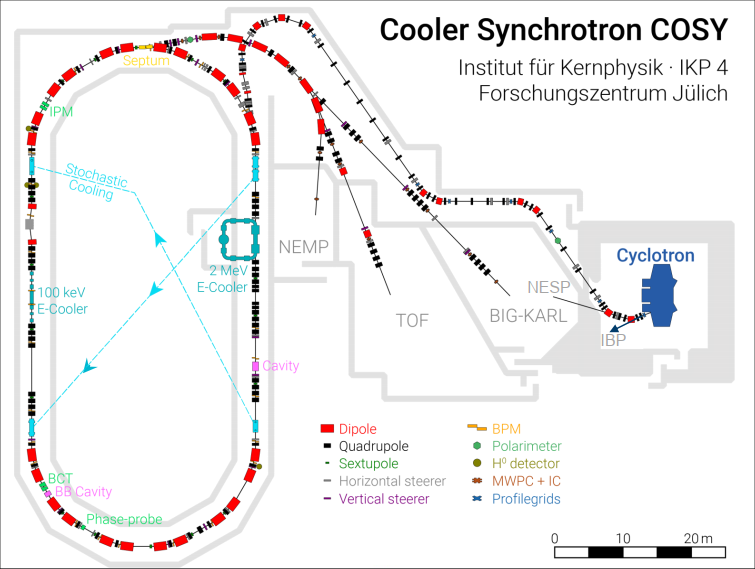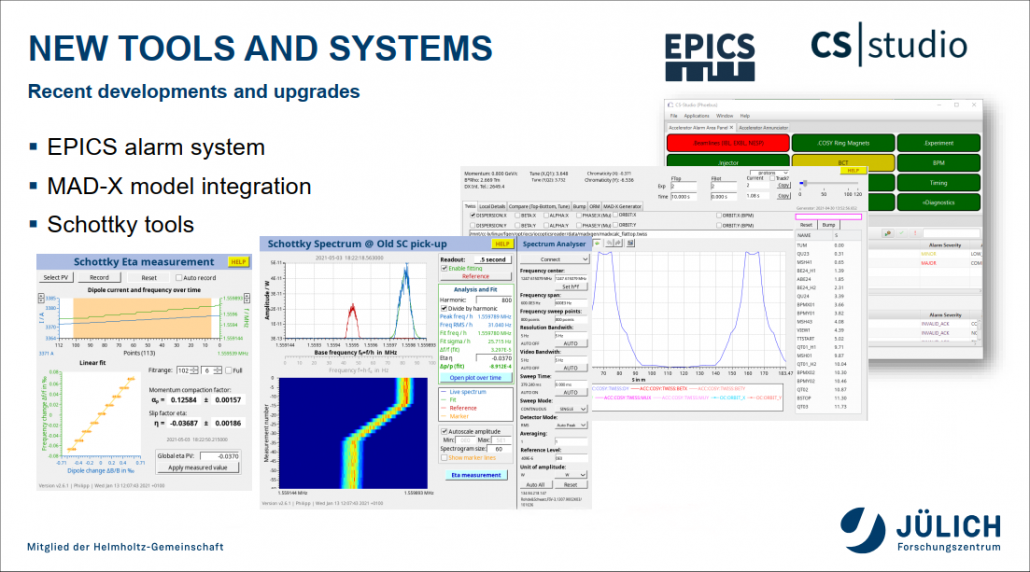A case of Improved Beam Control at COSY Jülich

Protons and deuterons
The COSY machine has a circumference of 184 m and accelerates protons up to 2700 MeV and deuterons up to 2100 MeV, and includes several facilities for hadron-physics experiments. Among them are the TOF flight spectrometer, the ANKE magnetic spectrometer and the WASA universal detector, formerly from the Svedberg Laboratoriet in Uppsala, Sweden. The synchrotron’s external and internal target stations are used by international and German scientists. The Forschungszentrum Jülich (FZJ) is one of the largest interdisciplinary research centres in Europe, exploring the basic principles and applications in health, information, environment and energy.
A step-by-step upgrade
The upgrade plan utilised a staged approach. There were several goals. The engineers were to make the Beam Control for the COSY machine faster and include enhanced tune-measurement tools. They also were to upgrade various parts of the control system and beam instrumentation hardware. The EPICS framework was to be utilised to allow upgraded access to beam instrumentation devices, orbit control and quadrupole-magnets control.

he newly introduced technologies and upgraded parts had to comply with the existing control system technologies. The split and interface between the two were well planned, and engineers assessed all the risks. The team from FZJ and industry partner Cosylab, a specialist in scientific control-systems integrations, designed, implemented, and thoroughly tested the combination of existing and new functionality before putting the solution into production.
The Improvements
Research Center Jülich and Cosylab succeeded in significantly enhancing the beam control and systems of various COSY subsystems Beam Controls. Among the benefits are:
- Routine delivery of sub-mm rms orbit deviation;
- High brilliance beams, produced with beam cooling;
- Numerous beam diagnostic systems seamlessly integrated into the EPICS-based control system;
- “On-the-fly” results through automated measurements of critical accelerator parameters;
- Extensive use of bunch-by-bunch beam position data for chromaticity and tune monitoring;
- Effortless saving and restoring of machine parameter sets;
- Swifter issues resolution via extended monitoring and alarming capabilities;

Controls-systems engineers from FZJ and Cosylab introduced the improved Beam Control for the Cooler Synchrotron at IPAC’21.
You can view the video presentation at https://eduplay.rnp.br/portal/video/embed/110084.
Subscribe to our newsletter
What kind of content are you interested in?

